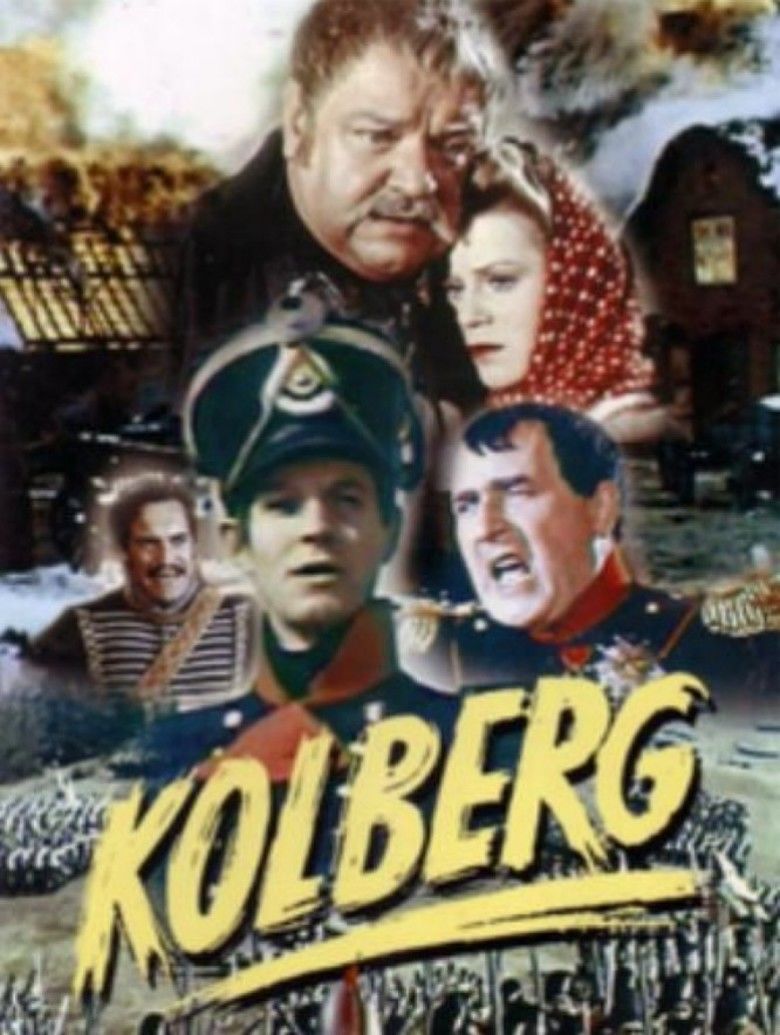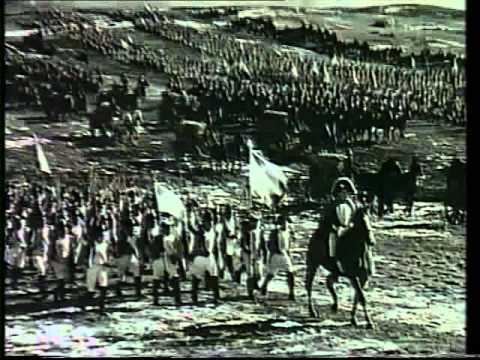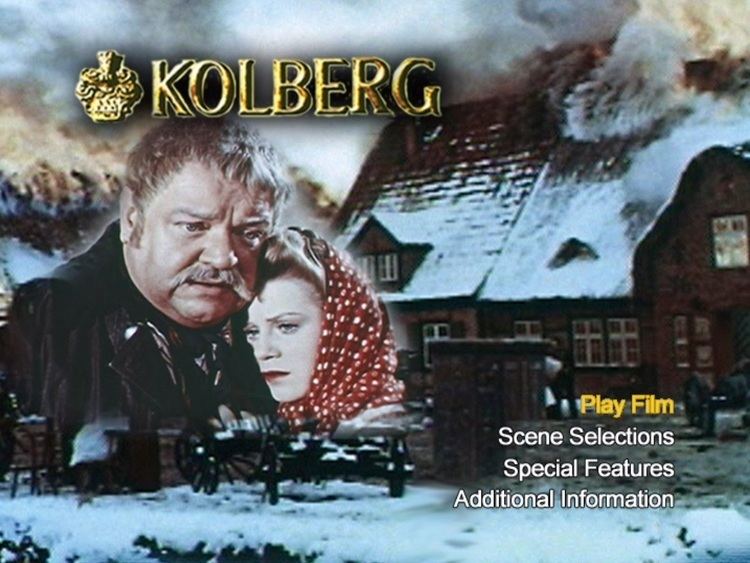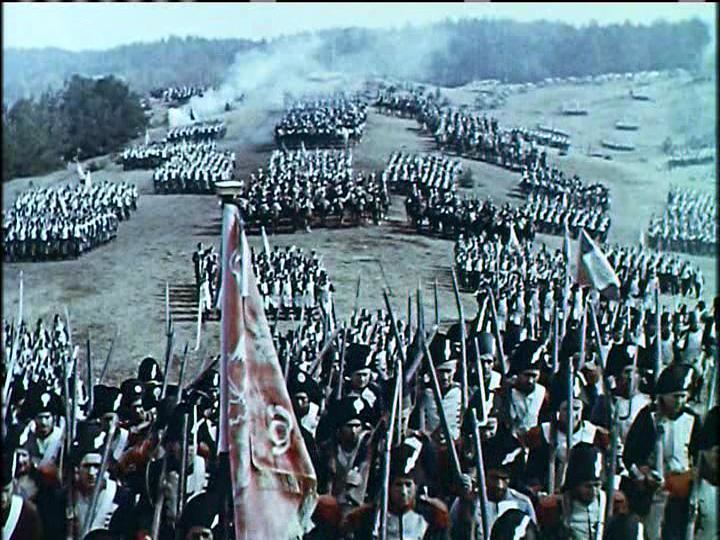Kolberg (film)
8.1 /10 2 Votes
Duration | 6/10 IMDb Genre Drama, History, Romance | |||||||||||||||||||||||||||||||||
 | ||||||||||||||||||||||||||||||||||
Release date 30 January 1945 (1945-01-30) Cast (Nettelbeck), (Maria), (Gneisenau), (Schill), (Loucadou), (König Friedrich Wilhelm III.) Similar movies Love and Death , War and Peace , Waterloo - The Last Battle , Hearts Divided , The Firefly , Conquest | ||||||||||||||||||||||||||||||||||
Kolberg is a 1945 German historical film directed by Veit Harlan. One of the last films of the Third Reich, it was intended as a Nazi propaganda piece to buoy the will of the German population to resist the Allies.
Contents

The film is based on the autobiography of Joachim Nettelbeck, mayor of Kolberg in western Pomerania, and on a play drawn from the book by Paul Heyse. It tells the story of the defence of the besieged fortress town of Kolberg against French troops between April and July 1807, during the Napoleonic Wars. In reality, the city's defense, led by then-Lieutenant Colonel August von Gneisenau, held out until the war was ended by the Treaty of Tilsit. In the film, the French abandon the siege.

Kolberg 1945 on retrofilms in
Plot

The film begins in 1813 after the phase of the Napoleonic Wars known in German as the Befreiungskriege (War of Liberation). The opening scenes show Prussian Landwehr and volunteers marching down the streets of Breslau through enthusiastic crowds. This is followed by a dialogue between King Frederick William III of Prussia and Count August von Gneisenau, in which Gneisenau explains that the siege of Kolberg taught the importance of citizen armies. Ending with the admonition that kings who cannot lead must abdicate, the scene switches to Vienna in 1806 to show the abdication of the last Holy Roman Emperor, Francis II of Austria, whom the script has Gneisenau call "an Emperor who abandoned the German people in their hour of need".

The scene set, the film moves to 1806 and a Kolberg not yet affected by war, where the inhabitants are shown enjoying life, and the town's leaders, Nettelbeck chief among them, discuss Napoleon's proclamations, and what it will mean to them. Some see the French victories as a good thing, some wonder whether to leave. Nettelbeck alone is set on resisting the French. The film continues in this vein, with Nettelbeck struggling against cowardice, lethargy and the old-fashioned ideas of the garrison commander, to defend his city against the approaching French. Nettelbeck creates a citizen militia, in spite of the best efforts of the regular army, has supplies collected, and strongly opposes the idea of surrender.

Finally, having been threatened with execution, and convinced that Kolberg can only be saved if a great leader can be found, Nettelbeck sends Maria on the dangerous journey to Königsberg whither the Court of Prussia has retreated, to meet with the King and with Queen Louise, who was described by Napoleon as "the only man in Prussia". Maria's journey leads to the energetic and charismatic Gneisenau being sent to Kolberg. After an initial confrontation with Nettelbeck, in order to show that there is only one leader in Kolberg, and that Gneisenau is that leader, the two work together with the army and the citizens to save the city from the French. After Kolberg is (unhistorically) saved, the film returns to 1813 after the Convention of Tauroggen, a time when Napoleon was defeated in Russia, and Prussian leaders wonder whether it is time to turn openly against him. Frederick William is convinced by Gneisenau to do so, and sits down to write the proclamation An Mein Volk ("To my People") announcing the Wars of Liberation.
Cast

Production
The film is based on the 1823 edition of the autobiography of Joachim Nettelbeck, mayor of Kolberg, and on the 1865 play drawn from the book by Nobel laureate Paul Heyse. No reference was made to the latter as the author was Jewish. Joseph Goebbels explicitly ordered the use of the historical events for a film, which he regarded as highly suitable for the circumstances Germany faced.

Kolberg entered production in 1943, and was made in Agfacolor with high production values. At a cost of more than eight million marks, it was the most expensive German film of the World War II, with the actual cost suppressed to avoid public reaction. At a time when the war was turning against Germany, thousands of soldiers were used in the film.
Principal cinematography took place from 22 October 1943 to August 1944. The exteriors were shot in Kolberg and environs, Königsberg, Berlin and environs, Seeburg, and Neustettin.
To film scenes with snow during summer, 100 railway wagons brought salt to the set in Pomerania. The film was finally completed at the Babelsberg Studios at Potsdam while the town and nearby Berlin were being steadily bombed by the Allies. Two extras were killed during the making of the film when an explosive charge went off too early.
The film's extra cast was a massive 187,000 people out of whom about 50,000 were soldiers. The film has the second highest cast strength after Gandhi (1982).
Release
The film opened on 30 January 1945 in a temporary cinema (U.T. Alexanderplatz) and at Tauentzien-Palast in Berlin, and ran under constant threat of air raids until the fall of Berlin to Soviet forces in May 1945. Simultaneously with the opening in Berlin it was shown to the crew of the naval base at La Rochelle at the Théâtre de la Ville. It was also screened in the Reich Chancellery after the broadcast of Hitler's last radio address on 30 January. One of the last films of the Third Reich, it never went into general release.
The city of Kolberg was declared a Festung ("fortress town") as Soviet forces neared it on 24 February 1945. Within a month of the film's opening Kolberg was under full siege (sometimes called the "Second Siege" or "Second Battle" of Kolberg), with around 70,000 trapped German civilians and military personnel. House-to-house fighting caused devastation. Kolberg fell to Soviet and Polish forces on 18 March 1945. Many civilians escaped by sea, and those who survived were permanently expelled along with all Germans in east Pomerania. The ruined city of Kolberg became part of Poland and is now known as Kołobrzeg.
The film was re-released in 1965, with an attached documentary, and is now available on DVD. In Germany, it is a Vorbehaltsfilm ("reservation film"), available for screening from the holder of the rights (Friedrich Wilhelm Murnau Foundation) only under special conditions.
References
Kolberg (film) WikipediaKolberg (film) IMDb Kolberg (film) themoviedb.org
